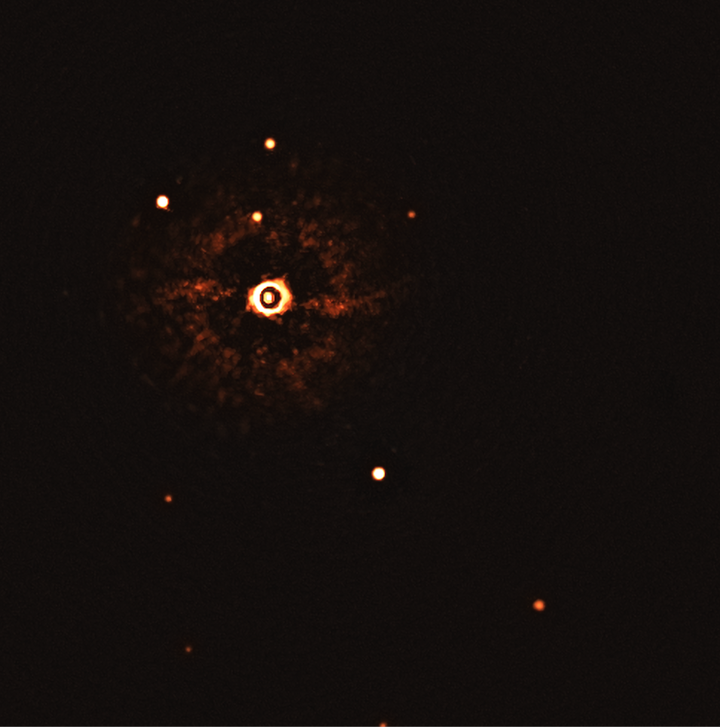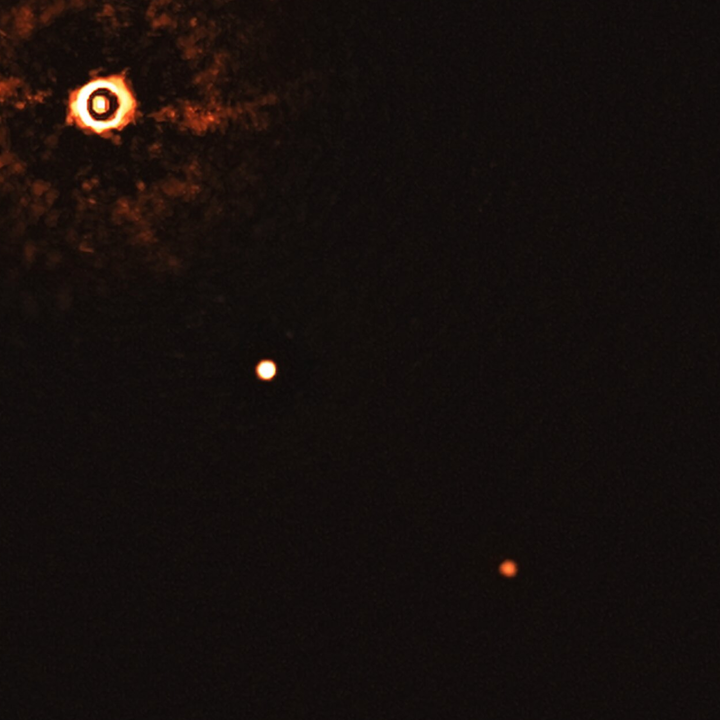The first image of a multiplanetary system in space revolving around a star similar to our solar system’s sun has been captured by the European Southern Observatory.
The picture was taken via the observatory’s Very Large Telescope, which is located in Chile’s Atacama Desert and has been touted as the “world’s most advanced optical instrument.” It is actually composed of eight separate telescopes — four large and four small — that can be used independently or combined together to capture one distinct image.
The image shows a star roughly 300 light-years away and 17 million years old that has been named TYC 8998-760-1, according to an ESO news release. Alexander Bohn of the Netherlands’ Leiden University, who led the research into the star, called it “a very young version of our own sun.”
The image also shows two exoplanets — meaning planets orbiting around a star other than the sun — and they have been dubbed TYC 8998-760-1b and TYC 8998-760-1c. Both planets are suspected to be gas giants, a term used to refer to planets primarily composed of helium and hydrogen, such as Jupiter and Saturn.
The VLT also captured the first image of an exoplanet back in 2004, but the new image is a milestone as the first instance of astronomers’ observing more than a single planet rotating around a star.


“This discovery is a snapshot of an environment that is very similar to our solar system, but at a much earlier stage of its evolution,” Bohn said, adding that observing these faraway stars and planets would be vital in the ongoing search for space environments capable of supporting life.
“The possibility that future instruments … will be able to detect even lower-mass planets around this star marks an important milestone in understanding multiplanet systems, with potential implications for the history of our own solar system,” Bohn said.
Calling all HuffPost superfans!
Sign up for membership to become a founding member and help shape HuffPost’s next chapter
Credit: Source link